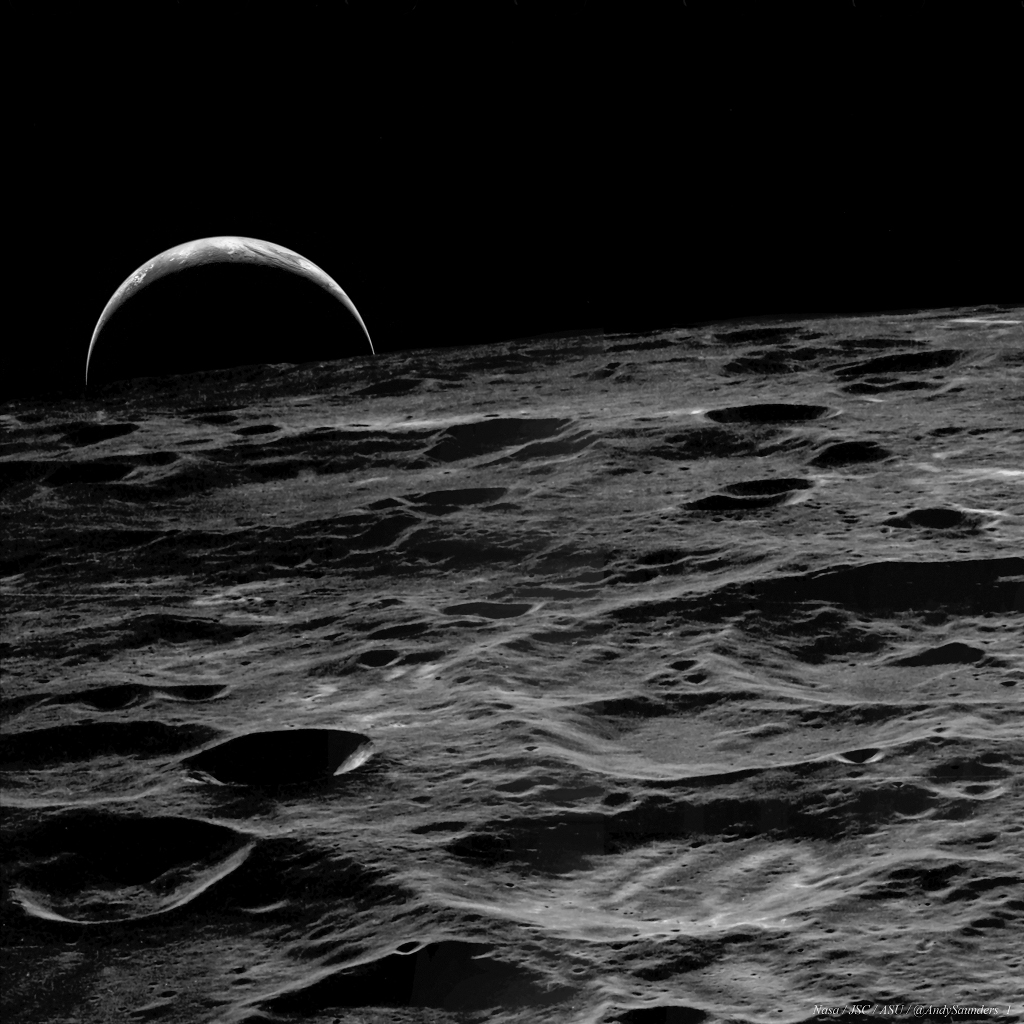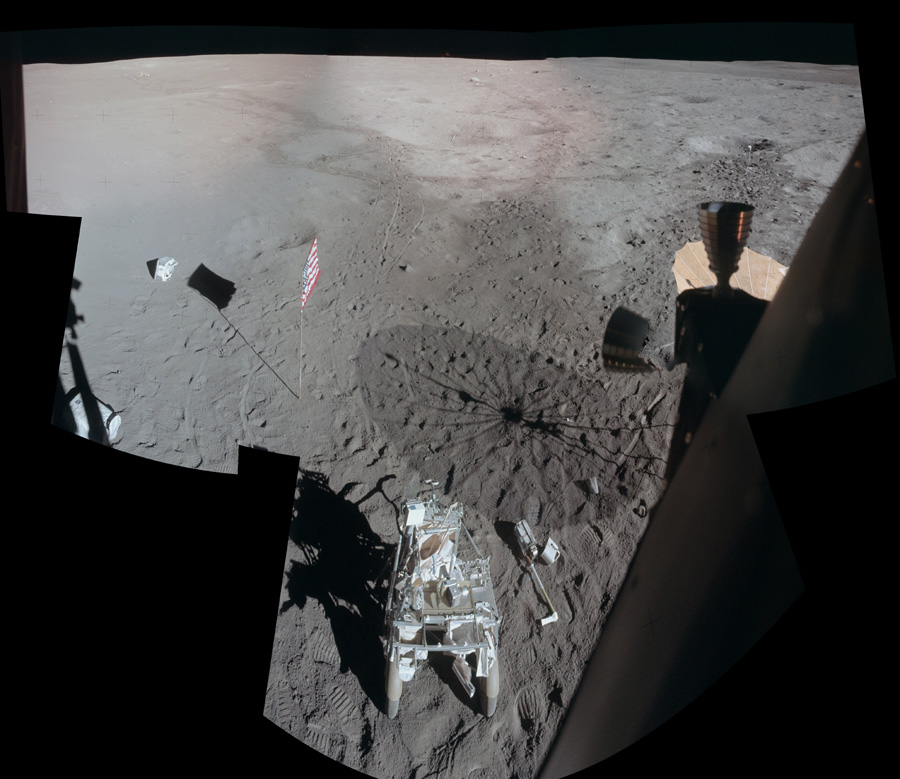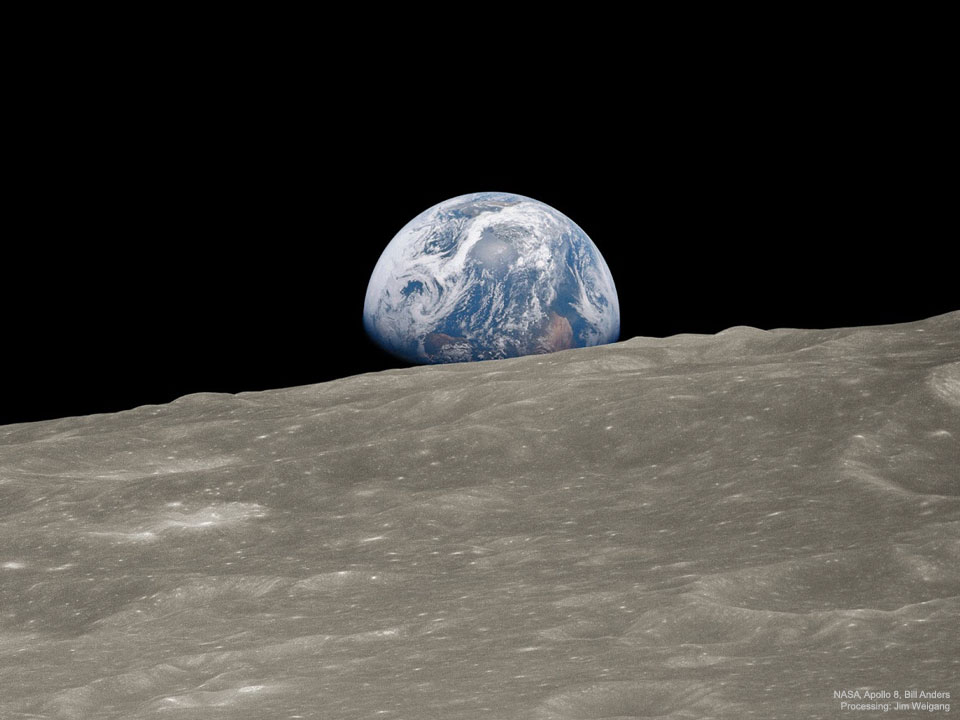2020 February 1
Apollo 14 Heads for Home
Image Credit: Apollo 14, NASA, JSC, ASU (Image Reprocessing: Andy Saunders)
Explanation: When leaving lunar orbit in February 1971, the crew of Apollo 14 watched this Earthrise from their command module Kittyhawk. With Earth’s sunlit crescent just peaking over the lunar horizon, the cratered terrain in the foreground is along the lunar farside. Of course, while orbiting the Moon, the crew could watch Earth rise and set, but the Earth hung stationary in the sky over Fra Mauro Base, their landing site on the lunar surface. Rock samples brought back by the Apollo 14 mission included a 20 pound rock nicknamed Big Bertha, later determined to contain a likely fragment of a meteorite from planet Earth.
阿波罗14号打道回府
影像提供: Apollo 14 , NASA , JSC, ASU (Image Reprocessing: Andy Saunders )
说明: 在1971年2月阿波罗14号离开月球轨道时,当时位在小鹰号指挥舱内的组员,目睹了这个地出景观。在视野里,日耀的蛾眉状地球低悬在月球地平线上,前景则为月球反面布满撞击坑的原野。想当然耳,在绕月轨道上,这些组员会见到地升与地落的景观,不过在此时,地球则是稳定的滞留在他们于月表的降落点─ 弗拉·毛罗基地的上方。阿波罗14号任务携回的月岩样品(包括一块9公斤重、昵称大伯莎的月岩)中,后来发现有一块可能是源自地球的陨石之碎片。



